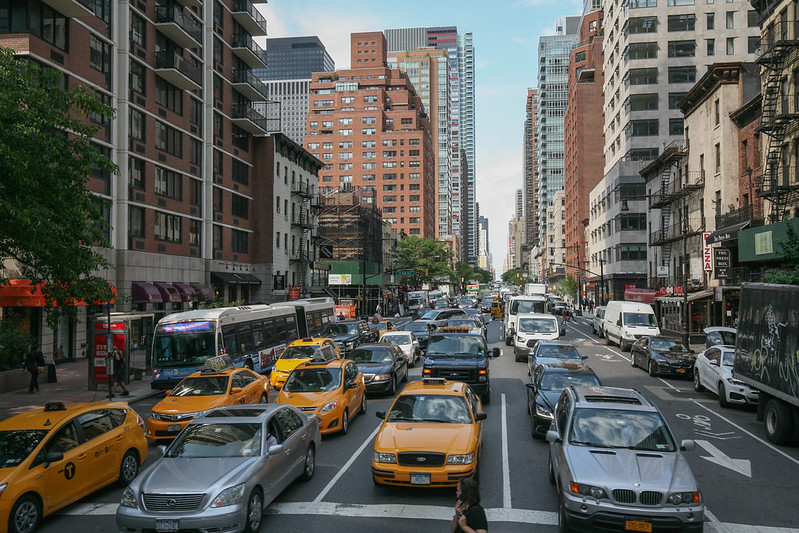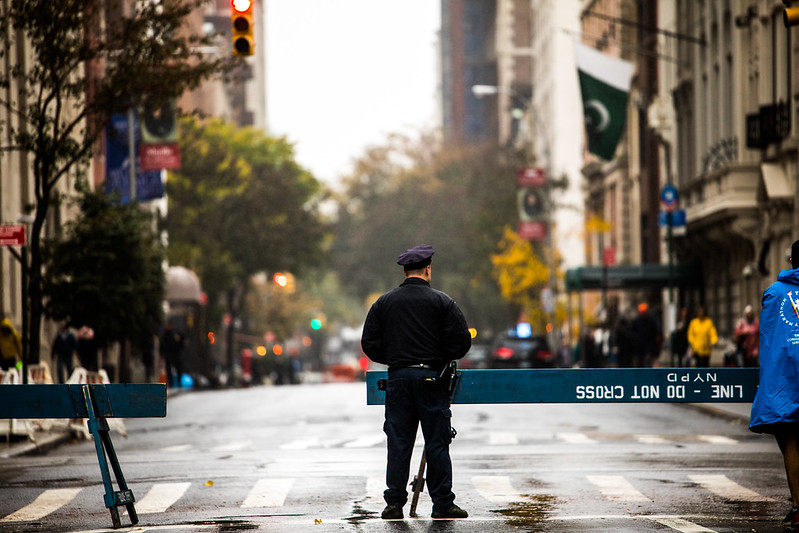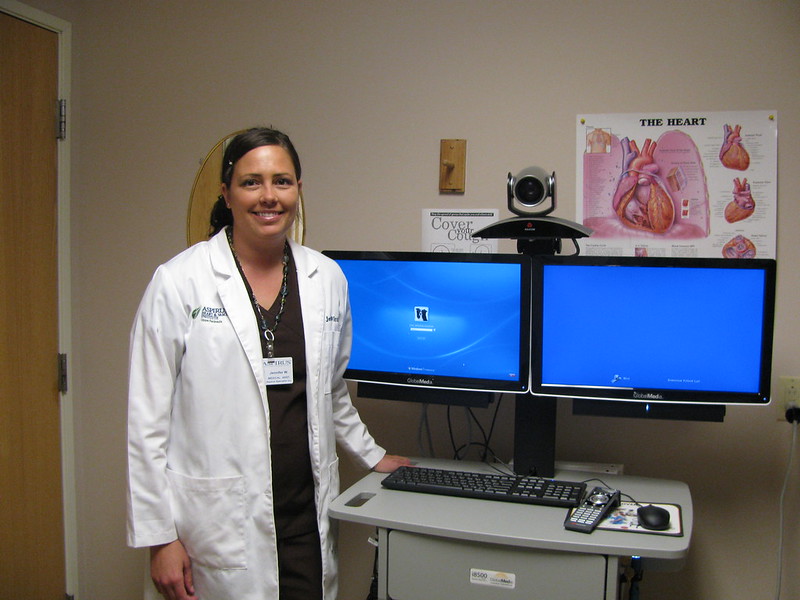Delay Congestion Pricing to Give Suffering Middle Class New Yorkers a Break

Manhattan traffic (photo: trothwell)
In 2019, my colleagues in Albany approved congestion pricing for drivers to enter a proposed zone in midtown Manhattan (over my strenuous objection and “no” vote). Under the plan, anyone entering the borough south of 60th Street in a car or truck will be charged an extra fee.
The idea was first proposed by former Mayor Michael Bloomberg in 2006 and was designed to reduce midtown traffic and add much-needed revenue to a city transportation system in dire need of it. It was set to begin this January, but was delayed because of COVID-19. Now, with covid far from over, city leaders and the MTA are rushing to push it through.
Even if it takes more time, New Yorkers - especially small business owners - have suffered enough. We should wait at least two years from the official end of the pandemic before we implement congestion pricing and burden drivers even further.
Early last year, New York City became the American epicenter of the biggest global health disaster in a century. COVID-19 has killed more than 31,000 city residents. It has cost more than 750,000 permanent jobs throughout the five boroughs. More than 43% of New York City businesses that were opened at the beginning of last year are closed right now — many will never open their doors again.
Small business owners are the lifeblood of New York City. They are the men and women who own and operate bodegas and body shops from Tribeca to Throggs Neck. They are the plumbers, electricians, and construction workers who trek in from all parts of Queens, Brooklyn, the Bronx, and Staten Island to build and maintain everything from the world-famous Manhattan skyline to structures for outdoor dining. Too many of our fellow New Yorkers live in areas far away from subway or bus lines. Just ask anyone living in Fresh Meadows, Marine Park, Throggs Neck, or on Staten Island who spends hour in traffic to drive to Manhattan — because it’s actually easier, but certainly not cheaper.
These entrepreneurs and tradespeople were already stretched thin before COVID-19 struck. They pay astronomical city rents and taxes, make payroll to keep other New Yorkers and their families financially secure, and spend thousands of dollars a year on gas, tolls, and parking just to run their businesses on a daily basis. Many have been hit hard by covid in their own households or their pocketbooks, sometimes both. Now, we are expecting them to begin to pay as much as $25 per day on top of what they are already laying out just to begin their workdays.
This was not fair two years ago (I tried rather valiantly to add an exemption for New York City residents). It’s absolutely beyond the pale now. We need to wait.
Last week, the Federal Highway Administration, under the U.S. Department of Transportation, announced that an environmental assessment (EA), instead of a more-involved and complicated environmental impact statement (EIS), would be enough to get the ball rolling on congestion pricing in New York City. After the review is completed, the MTA can begin the process of setting up EZ Pass cameras and ticketing systems north of 59th Street in Manhattan (the northern border of the proposed zone), as well as on the Ed Koch Queensboro Bridge, the Manhattan Bridge, the Brooklyn Bridge, and the Battery, Lincoln, and Holland Tunnels.
I was born and raised in the Hollis area of Queens, a quintessential middle class residential neighborhood in southeast Queens, pretty close to the Nassau border. My mother, a Cuban Jewish immigrant (who just turned 91 last week), was a public school teacher and a UFT member. My father, the son of Russian Jewish immigrants, was a veteran and an attorney who was elected by his friends and neighbors to represent them in the State Assembly — the same seat I now hold.
Despite my dad’s public profile, my parents were never wealthy. He passed away in 1994, but I can only imagine the fight he would have put up if he knew the state he ser ved for so long was going to make hard-working men and women — the same people he fought for in his time — pay a fee just to drive into Manhattan on the now-free bridges, especially during a pandemic of this magnitude.
As a former City Council finance committee chair and now an Assemblymember from Queens running for City Comptroller, I completely understand the need to add to city coffers. And as someone who has driven into Manhattan for much of my adult life, I fully appreciate the lofty goal of reducing traffic and the damage to our environment caused by cars and trucks.
But to accomplish those goals on the backs of hard-working New Yorkers and small business owners already devastated by the pandemic is just adding insult to injury.
We’ve come a long way as a city. We have weathered storms before. This one will subside. Until it does, we cannot afford to ask hard-working New Yorkers to shoulder another burden.
Waiting an extra two years is not too much to ask. Burdening our small business owners is, however.
***
David Weprin is an Assemember from Queens and a Democratic candidate for New York City Comptroller. On Twitter @DavidWeprin.
***
Have an op-ed idea or submission for Gotham Gazette? Email This email address is being protected from spambots. You need JavaScript enabled to view it.
Man Plans, God Laughs: How Not to Reform the Criminal Justice System

NYPD on the street (photo: Benjamin Kanter/Mayoral Photo Office)
In an era of excitement about criminal justice reform in the United States, few places have engendered higher hopes than Los Angeles and Minneapolis.
Minneapolis was, of course, the site of the tragedy that sparked a season of protest: the brutal killing of George Floyd. In the aftermath of Floyd’s death, the Minneapolis City Council did something extraordinary: it voted to disband the Minneapolis Police Department. “Our efforts at incremental reform have failed. Period,” Lisa Bender, the City Council president, announced in June 2020. Instead of incremental change, the politicians in Minneapolis sought something more dramatic: “to end policing as we know it.”
Meanwhile, in Los Angeles, District Attorney George Gascón won office last fall promising sweeping changes, including ending the use of the death penalty, reducing incarceration, and eliminating cash bail. Taken together, Gascón’s proposed reforms amounted to a dramatic rethinking of the role of prosecutors. “Our efforts to transform the dated approach that creates more crime, more victims and inequities are just beginning,” Gascón declared.
A new era of public safety appeared to be dawning in Los Angeles and Minneapolis.
Fast forward to today. The heady excitement of 2020 has given way to something more sobering in 2021. Today, an organized recall movement is attempting to remove Gascón from office. And in Minneapolis, the effort to dismantle the police department has hit a number of roadblocks, including soaring crime rates. At the end of the day, instead of abolishing the police, Minneapolis ended up shifting $8 million from the $179 million police budget to support mental health programs and violence prevention efforts.
What’s gone wrong here? The simplest answer is that reformers in Minneapolis and Los Angeles have run up against reality. There’s an old Yiddish proverb to explain this phenomenon: Man plans, God laughs.
In Los Angeles, Gascón’s reforms have been met with resistance from numerous quarters, including his own prosecutors, some of whom have complained that their office has effectively been subject to a “hostile takeover” by the defense bar. The prosecutors union is even suing Gascón, arguing that some of his changes are unconstitutional. In Minneapolis, police officers are leaving the force in droves. Sasha Cotton, who heads the local Office of Violence Prevention, has tried her best to temper expectations of a new approach to public safety, warning against rushing out new programs to meet the demands of those seeking a “quick solution.”
Los Angeles and Minneapolis are powerful reminders that “policy implementation in the end comes down to the people who actually implement it,” as Michael Lipsky observed in his seminal book Street Level Bureaucracy.
Politics and policy matter. But so does practice on the ground. Even the best-intentioned, most well-written laws will only get us so far, because the people charged with implementing those laws have minds of their own.
Frontline practitioners have repeatedly shown that they are capable of undermining, and sometimes rejecting, policies that they do not support. Lasting change within the American criminal justice system cannot happen overnight. And it can’t happen without significant support from the people who actually operate the criminal justice system.
Is there a better approach to reforming the criminal justice system than what is being attempted in Los Angeles and Minneapolis? New York City offers a compelling counter-example.
Since the early 1990s, the city has become demonstrably safer. At the same time, there have been massive shifts in the operation of the criminal justice system. Many of the practices that activists loathe most — including the imposition of cash bail, the use of pretrial detention, and sentences of incarceration — have been reduced dramatically. Indeed, these successes helped set the stage for the bail reforms enacted by the New York State Legislature in 2020 that largely eliminated cash bail.
The vast majority of these and other wins were accomplished not by decisive policy overhauls or by legislative fiat. Instead, they were the product of incremental changes initiated by reformers both inside and outside the system. Over time, these changes added up to something significant. And significantly, these reforms did not engender rebellion by frontline practitioners.
The New York City criminal justice system is far from perfect. There is still a need to address racial disparities, improve conditions of confinement, and bolster public trust in justice. But New York does offer vivid testimony that it is possible to win the hearts and minds of judges, cops, and other officials and avoid the practitioner veto that has complicated reform efforts in Los Angeles and Minneapolis.
***
Greg Berman is the distinguished fellow of practice at the Harry Frank Guggenheim Foundation. Aubrey Fox is the executive director of the New York City Criminal Justice Agency. They are the authors of Trial & Error in Criminal Justice Reform: Learn ing from Failure (Rowman & Littlefield). On Twitter @GregBerman50 & @aubreyfox1.
***
Have an op-ed idea or submission for Gotham Gazette? Email This email address is being protected from spambots. You need JavaScript enabled to view it.
Delivering Mental Health Care to Homeless New Yorkers During and After Covid

Telehealth is expanding, and should (photo: USDA)
In January 2020, it was announced that Tony Hannigan, Founder and CEO of the Center for Urban Community Services (CUCS) would be retiring in July. I was about to start my transition to become the new President and CEO. But one short month later, our Chief Medical Officer alerted us to an emerging public health crisis in Wuhan, China and those plans were put on hold. By the end of February, we knew we were standing on the cusp of a public health tsunami.
Addressing public health situations are not uncommon at CUCS. As the largest provider of community psychiatry for homeless and formerly homeless individuals in New York City and the only provider of medical care on the streets of Brooklyn, Queens, and Manhattan for individuals experiencing street homelessness, we’ve seen a lot. We knew that the poverty, structural inequities, and homelessness that affect our clients take a significant toll on their physical and mental health, so COVID-19 could be especially hard on them.
While most New Yorkers sheltered inside their homes beginning last March, individuals experiencing street homelessness had a dramatically different experience. Almost all of the places they could shelter during the day such as libraries, restaurants, and public spaces were closed. With the subway system shutting down nightly, a harsh light was shone on the need to provide more safe spaces for people to come inside for shelter and receive the medical and mental healthcare they need.
Many people living in shelters left them for the streets because they were afraid of catching the virus from other people sleeping in the same room with them. Other shelter users remained, saw people getting sick, and wondered when they would and how they would handle it. Despite some public outcry, when the city began to move congregate shelter residents into hotels we knew this would save lives.
New York City’s mental health system often does not function well enough for homeless individuals, and COVID-19 threatened to fragment that even more.
The pandemic forced us to shift much of our psychiatric care to telehealth platforms to ensure that our work with homeless and formerly homeless New Yorkers would continue and be safe to deliver. We were only able to do this because the government agencies that fund and regulate our work acted quickly and gave us the freedom to do it. Through this experience we have come to appreciate the value of telehealth as a way to reach more people, in more places, in an even more flexible manner. Virtual visits helped us maintain a continuity of care for our patients during the pandemic while keeping them and our staff safe and healthy. In fact, through our new hybrid system of telehealth and in-person visits, we provided 11% more psychiatric visits to homeless and formerly homeless individuals during the pandemic than we did last year.
Now, a year after New York City shut down and our vaccination efforts are gaining momentum, we must realize we are facing a mental health tsunami. Because of this and the proven effectiveness of telehealth services, city and state officials should make permanent the regulations that enable us to deliver psychiatric care in this way.
As we begin to move toward a post-pandemic era, the spirit of collaboration that was strengthened during the pandemic should be continued to enable us to develop more robust mental health services for homeless and formerly homeless individuals on the streets and throughout New York City’s homeless services system.
***
Joe DeGenova is President and Chief Executive Officer of the Center for Urban Community Services (CUCS), where he previously served in a variety of leadership roles, most recently as Associate Executive Director where supervised senior staff overseeing the agency’s programs and services. On Twitter @DeGenovaNYC & @CUCSnyc.
***
Have an op-ed idea or submission for Gotham Gazette? Email This email address is being protected from spambots. You need JavaScript enabled to view it.




